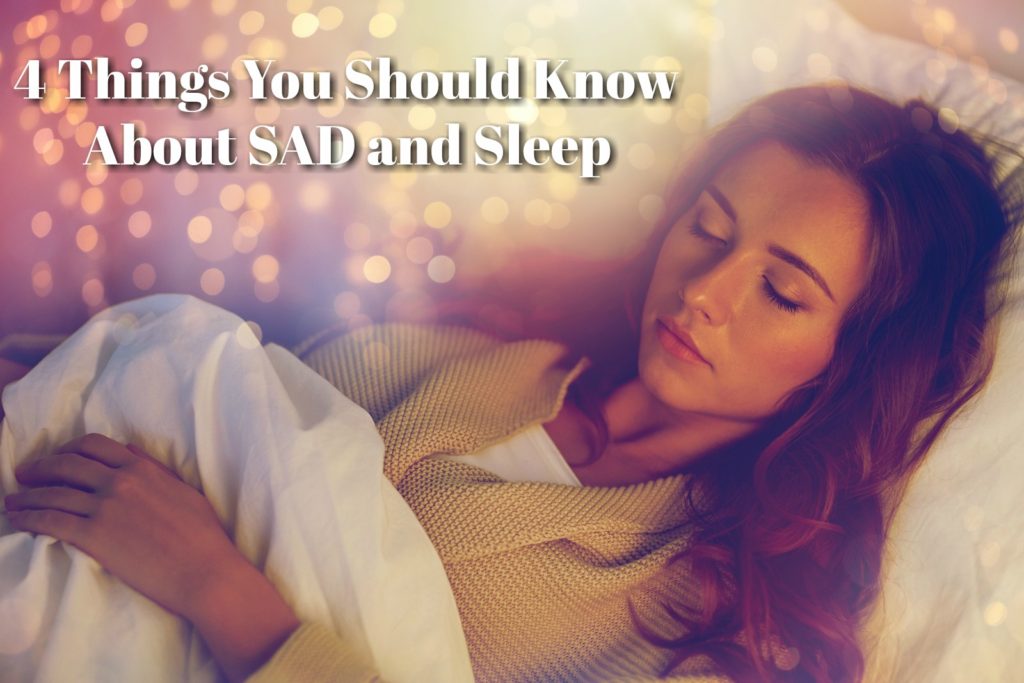Seasonal Affective Disorder (SAD) is a mood disorder that can cause depression, extreme fatigue, and mood swings. SAD was originally recognized by the American Psychiatric Association in the late 1990s and affects 4 to 6 percent of people.

For people with SAD, their symptoms will continue to come back and will often come and go around the same time each year, usually in the winter.
According to the Mayo Clinic, signs and symptoms of SAD may include:
- Being depressed for most of the day, almost every day
- No longer feeling interested in activities you previously enjoyed
- Low energy
- Trouble sleeping or oversleeping
- Changes in weight and appetite
- Craving carbohydrates
- Feeling sluggish
- Being easily agitated
- Difficulty concentrating
- Feelings of worthlessness, hopelessness or guilt
- Thoughts of death or suicide
Here are four things you should know about SAD and how it can affect your sleep:
It’s not the cold that makes you sleepy
SAD is often confused with the Winter Blues, a loss of energy due to dropping temperatures. With the Winter Blues, however, your loss of energy is easily cured with physical activity. SAD is not so simple. In fact, SAD makes one feel drowsy due to the decreased amount of daylight in the fall and winter months. These shorter days cause a decrease in the body’s melatonin production. Melatonin helps regulate sleep and depression, so when less of it is produced, it has a negative effect on your sleep patterns.
Insomnia or hypersomnia are side effects of SAD
You can develop SAD in either the winter or summer seasons (with winter being more common). The symptoms will vary based on which season you are affected. People affected in the winter months will have less energy and sleep more than normal. Those affected in the summer will notice an increase in energy, which could lead to insomnia.
Sunlight or the lack of sunlight affects your sleep
SAD is most often caused by the biological effects your body goes through due to the changing amounts of sunlight in a day. The reason for this is not fully understood, but many experts think that the change in sunlight triggers the hypothalamus. The hypothalamus is the center of the brain and is responsible for controlling your mood, appetite, and regulating melatonin production- which affects your sleep.
Circadian rhythms and circannual rhythms affect SAD
SAD is, in part, caused by changes to your circadian rhythm. Your circadian rhythm is an internal clock of sorts that helps manage your sleep-wake cycle throughout each day. Excessive sleeping, lack of sleep, and restless sleeping can cause you to feel groggy because it throws your circadian rhythm out of whack. Therefore, it is important to keep to a regular sleep schedule, especially if you are a person with SAD.
Circadian rhythms refer to your daily sleep patterns, and circannual rhythms are yearly sleep and energy patterns. Your ability to sleep with SAD may be linked to these circannual rhythms, which are actually the same thing that signals hibernation to animals. Circannual rhythms are triggered by weather patterns, changes in light, and the suns position in the sky. The spring and summer months will usually trigger an energy boost, much like the animals have when they gather all their food. And a lack of energy is triggered in the winter, as demonstrated by the animals when they hibernate.
Feeling a little blue at the onset of winter when the days get shorter and the weather is cooler is normal. However, if you are experiencing moods that are more extreme, and last longer, you may have SAD, and could benefit from a visit to your doctor to discuss your symptoms.

